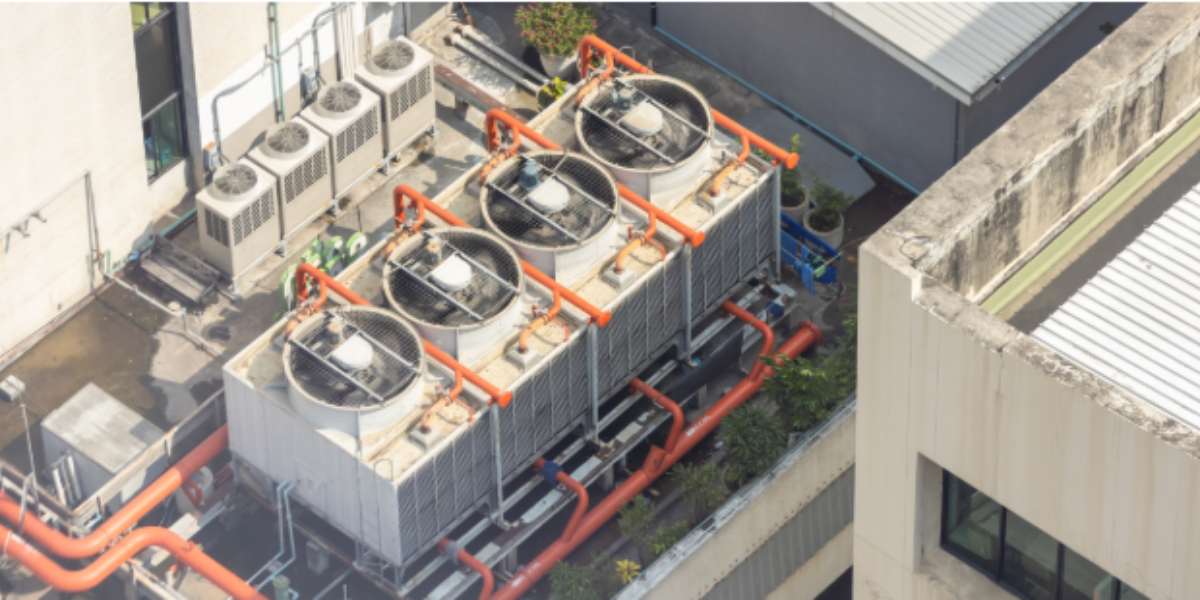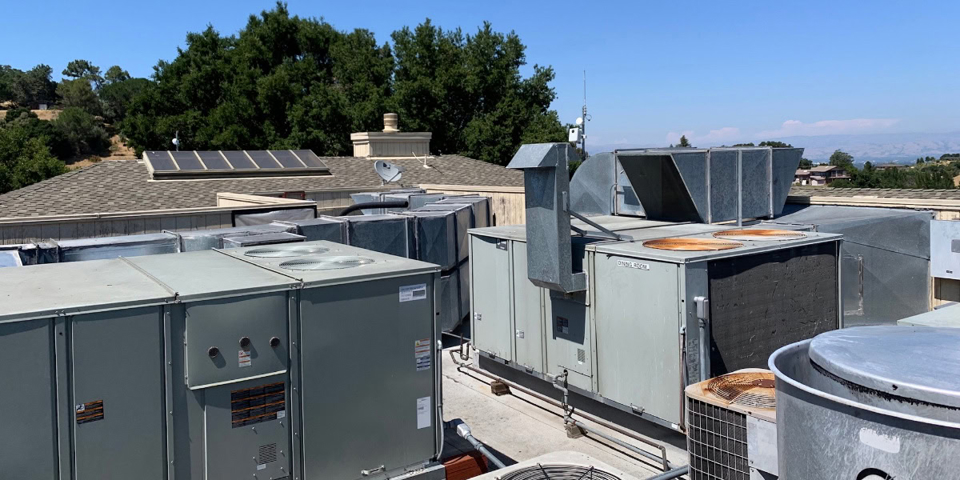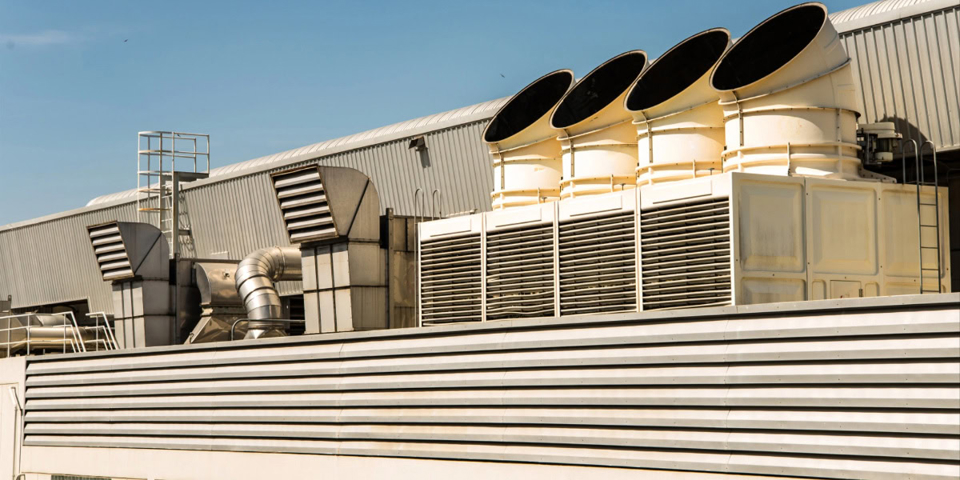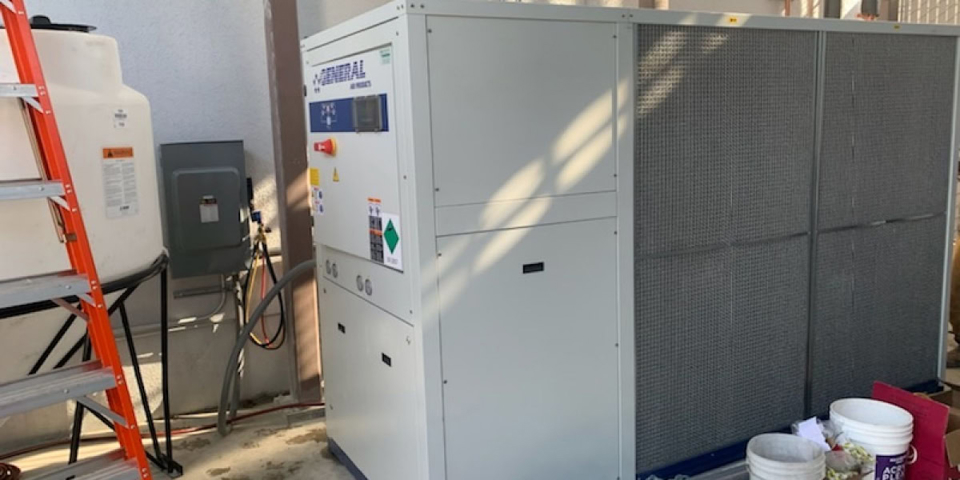Industrial chillers are key for cooling processes in many commercial and industrial places. Proper maintenance is critical to ensuring that these systems continue to function efficiently. Regular maintenance of industrial chillers can prevent costly breakdowns, extend the lifespan of the equipment, and enhance operational efficiency.
In this guide, we will explore industrial chiller maintenance, providing you with practical tips and a maintenance checklist. This article helps you keep your equipment running well. It’s for both beginners and those needing a quick review of industrial chillers.
What is industrial chiller maintenance?
An industrial chiller is a heavy-duty cooling system used to remove heat from industrial processes, machinery, or equipment. It works by circulating a coolant—usually water or a water-glycol mix—through a closed-loop system that absorbs and transfers heat away from the source. The cooled liquid is then recirculated to maintain a consistent temperature.
Industrial chillers are commonly used in sectors such as manufacturing, plastics, food and beverage processing, pharmaceuticals, data centers, and HVAC systems. They help prevent equipment from overheating, improve product quality, and enhance energy efficiency in temperature-sensitive operations.
There are different types of industrial chillers, including air-cooled, water-cooled, and evaporative condensers—each suited to specific applications and environments.
Industrial chiller maintenance refers to the regular care and servicing of chiller systems to ensure they operate efficiently and reliably. This maintenance involves tasks such as checking refrigerant levels, cleaning the system, and inspecting components for wear and tear.
Why is industrial chiller maintenance is important?
Regular maintenance of industrial chillers is crucial to ensure consistent performance, energy efficiency, and a longer lifespan of the system. Without proper care, chillers can experience reduced cooling capacity, higher energy consumption, and unexpected breakdowns that disrupt operations. Keeping your chiller in peak condition not only helps protect your equipment but also minimizes costly downtime and repairs.
Here are key reasons why industrial chiller maintenance is important:
- Improves energy efficiency – Well-maintained chillers run more efficiently, reducing electricity consumption and operating costs.
- Prevents system breakdowns – Routine inspections help catch minor issues before they turn into major failures.
- Extends equipment lifespan – Regular servicing reduces wear and tear, helping the system last longer.
- Maintains consistent cooling – Ensures optimal temperature control for critical processes and equipment.
- Supports compliance and safety – Maintenance helps ensure the chiller operates within safety and regulatory standards.
- Reduces repair costs – Proactive care minimizes the chances of unexpected, expensive repairs.
Key Components to Maintain in an Industrial Chiller
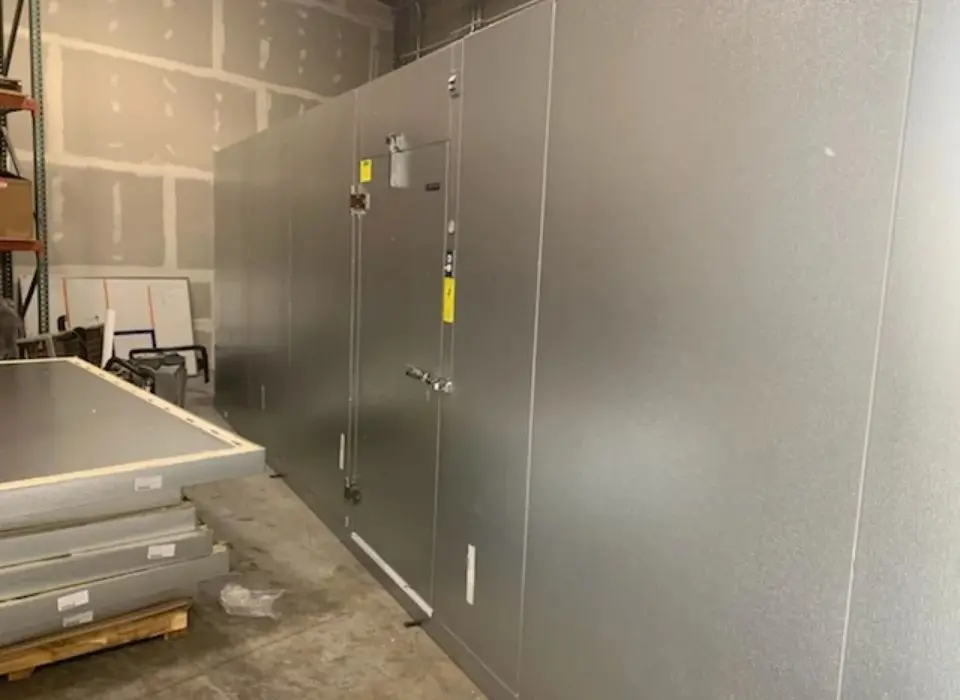
Several parts of an industrial chiller need attention during maintenance. Below is a breakdown of the most important components:
- Evaporator Coil: This part is crucial for heat exchange. Over time, dust and debris can accumulate, reducing efficiency. Cleaning the coil regularly ensures optimal heat transfer.
- Condenser Coil: The condenser coil dissipates heat absorbed by the chiller. Regular cleaning is necessary to maintain efficient cooling performance.
- Refrigerant Levels: Checking refrigerant levels is essential. Low refrigerant can cause the chiller to overheat and malfunction.
- Compressor: The compressor is the heart of the chiller system. Regular inspection ensures that it is operating at the correct pressure.
- Water Flow: Maintaining proper water flow is necessary for the chiller to function. Inspect pipes for clogs or leaks.
Industrial Chiller Maintenance Checklist
Using a comprehensive checklist ensures that we inspect and maintain all key components. Here’s a basic industrial chiller maintenance checklist:
Visual Inspection
- Inspect the chiller unit for any signs of physical damage, including cracks, rust, or leaks.
- Ensure that all ventilation areas are clear of obstructions.
Clean the Air Filters
- Clean or replace air filters to ensure that the system has adequate airflow.
Check the Refrigerant Level
- Verify that the refrigerant level is optimal. Refill or recharge if necessary.
Examine the Condenser and Evaporator Coils
- Inspect and clean the coils to prevent dirt and debris buildup, which can reduce efficiency.
Inspect the Compressor
- Ensure that the compressor is operating correctly. Check for unusual noises or vibrations.
Check the Water Flow
- Ensure that the water is circulating properly and that no pipes are clogged or leaking.
Examine the Control Systems
- Test the control systems to make sure all settings are functioning correctly and within the manufacturer’s recommendations.
Check Pressure and Temperature Readings
- Ensure the pressure and temperature readings are within the normal range.
Inspect Insulation
- Check for any damage or wear to insulation, as poor insulation can lead to energy loss.
Lubricate Moving Parts
- Lubricate fans, pumps, and other moving parts to reduce friction and wear.
Industrial Chiller Maintenance Tips
In addition to the checklist, consider the following tips to improve your maintenance routine:
- Create a Routine Schedule: Set up a regular maintenance schedule to stay on top of tasks. This helps catch small problems before they escalate.
- Train Employees: Educate your team on basic maintenance tasks to reduce the risk of errors and system failures.
- Use Quality Parts: Always use high-quality replacement parts to ensure the longevity of your chiller system.
- Hire a Professional: We can do some tasks in-house. But, for complex maintenance or repairs, hiring professionals is the best choice. R&R Refrigeration & Air Conditioning offers expert industrial chiller maintenance services.
- Monitor Performance: Keep track of the chiller’s performance and use software tools, if available, to monitor temperature, pressure, and energy consumption.
Common Industrial Chiller Problems and How to Address Them
Even with regular maintenance, industrial chillers can face issues. Here are some common problems and solutions:
- Low Refrigerant Levels: This can lead to reduced cooling efficiency. Check for leaks and refill the refrigerant as needed.
- Condenser Overheating: Dust or debris may block airflow, causing the condenser to overheat. Clean the condenser regularly to avoid this issue.
- Compressor Failure: If the compressor is not functioning correctly, it may be due to a malfunctioning control system or lack of lubrication. Inspect and repair as necessary.
- Water Flow Problems: Poor water circulation can result from clogged pipes or pumps. Regular inspection of the water system can help avoid this issue.
When Should You Schedule Industrial Chiller Maintenance?
At R&R, we recommend scheduling industrial chiller maintenance at regular intervals to ensure your system runs efficiently and reliably throughout the year. Ideally, maintenance should be performed at least twice a year, with additional checks before peak usage seasons, such as summer months when cooling demand is highest.
Depending on the specific application and load, some systems may require quarterly or even monthly inspections to prevent performance dips or unexpected breakdowns. R&R offers tailored maintenance schedules based on your equipment type, usage patterns, and industry needs—so you get the right level of care at the right time.
Don’t wait for signs of trouble—routine maintenance is the key to long-term performance. Contact R&R today to schedule your industrial chiller service and keep your operations running smoothly.
Conclusion
Industrial chiller maintenance is an essential task for ensuring that your cooling system operates efficiently. By following a regular maintenance checklist and implementing the tips provided, you can extend the lifespan of your chiller, prevent costly repairs, and maintain optimal energy efficiency. Whether you perform basic checks yourself or hire a professional service like R&R Refrigeration & Air Conditioning, staying on top of maintenance will help you avoid downtime and costly repairs in the future.
FAQs
How often should I perform industrial chiller maintenance?
Maintenance should be done at least twice a year, with more frequent checks if the chiller is used extensively.
What are the signs that my industrial chiller needs maintenance?
Signs include unusual noises, temperature fluctuations, high energy bills, or visible leaks.
Can I perform industrial chiller maintenance myself?
Some tasks like cleaning filters or checking water flow can be done in-house, but it’s best to hire professionals for complex tasks.
How long do industrial chillers last with proper maintenance?
With regular maintenance, industrial chillers can last between 15 to 20 years.
What are the consequences of neglecting industrial chiller maintenance?
Neglecting maintenance can lead to breakdowns, higher energy costs, and a shorter lifespan for the chiller.


